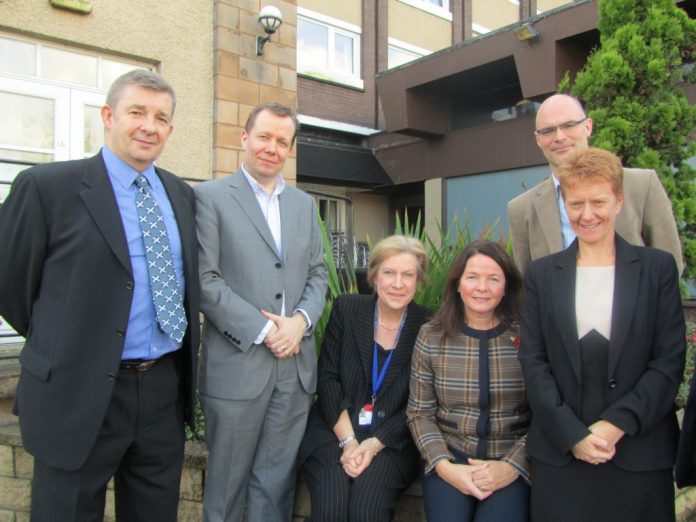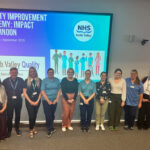The new buzzword “ person-centredness “ is officially defined as “the standard of care that ensures the patient is at the centre of delivery.” For people like our Communications Manager Kate Fawcett, who does not have a clinical background, it all sounded a little worthy. But as she discovered when she attended a local launch event at the Park Hotel in Falkirk, ‘person- centredness’ throws up some radical concepts, which not only question current practice, but if implemented correctly can make patients and families feel much better.
Faced with a list of speakers, a stack of power point presentations, and a round of workshops, this was an event that to me suggested a potential talking shop. But within minutes, Professor Jason Leitch from the Quality Unit of the Scottish Government had me hooked.
“The move to make caring for patients the centre of everything we do is the single silver bullet that will transform our health service “ he told his 150-strong audience. Showing a picture from a daily newspaper of patients who died in the Mid Staffordshire scandal, he remarked they were not all elderly – babies and young adults perished too. They died, he said, because of you and me and the healthcare system we have allowed to develop over the past 60 years.
I don’t think Stafford Is happening in Larbert he said, but there are elements of Stafford in every healthcare system in the world. And left alone, the system will be unsafe.
Professor Leitch admitted to an obsession with visiting times, advocating more flexibility. He said he would retire when all the bells signalling the end of visiting times fell silent, and remarked there was nothing to fear from open visiting. He pointed out: “Forty people would not arrive at a bed at once, with tartan rugs and flasks of tea! And having families present at ward rounds would change the whole dimension.
He also warned that Whistleblowing does not come without risk and challenges, but pointed out that it was more important than keeping quiet.
It was a captivating performance. So what of the solutions? Place the quality of patient care, especially patient safety, above all other aims. Involve patients in discussions and communicate care plans. Switch management style from business as usual to incident command mode. Promote staff development; if staff are miserable patients will be miserable too. Ask every patient what matters to them. What information do they need? Engage, empower, and hear patients and carers at all times
Embrace transparency unequivocally and everywhere, in the service of accountability, trust, and the growth of knowledge. Abandon blame as a tool and recognise with clarity and courage the need for wide systemic change.
Powerful messages to back his theory that person-centredness is not fluffy but should be hard edged and reliable.
His sentiments were echoed by speakers including NHS Forth Valley Chief Executive Jane Grant, Chairman Alex Linkston, Director of Nursing Professor Angela Wallace and I left with much food for thought, somewhat inspired by the dynamism and vision to build on what has already been achieved in Forth Valley to put our patients first.
Here are some examples of what’s happening locally
Patient Experience Champions
We currently have 80 patient experience champions across all areas. These are made up of front line staff and members of the patient panel. Champions use a variety of methods to collect information; for example every week five patients in each ward complete a patient experience questionnaire. This provides ‘real-time’ information and gives staff the opportunity to respond to any concerns raised. Feedback is also collected via talking mats, digital stories and focus groups.
Kardex Meetings
This enables mental health patients to identify how they feel before and after meeting their consultant to review their treatment plan. Changes have also been to the documentation so the patient’s views can be recorded prior to the meeting, allowing them to raise issues they are concerned about. After every Kardex meeting, patients also have a follow-up chat with the attending nurse to help ensure clarity and understanding.
You Said, We Did
Patient comments and suggestions are posted on notice boards along with details of changes made in response to this feedback
Complaints
Feedback is provided to staff involved and follow up action is taken, where appropriate. Learning is also discussed at a number of senior meetings and issues and complaints handling now form part of the wider Unit Reviews.
Patient Opinion
We work in partnership with Patient Opinion – a website which enables patients to share their experiences of healthcare services across the country. We actively listen and respond to postings and use the feedback to help make changes to practice, where appropriate.







